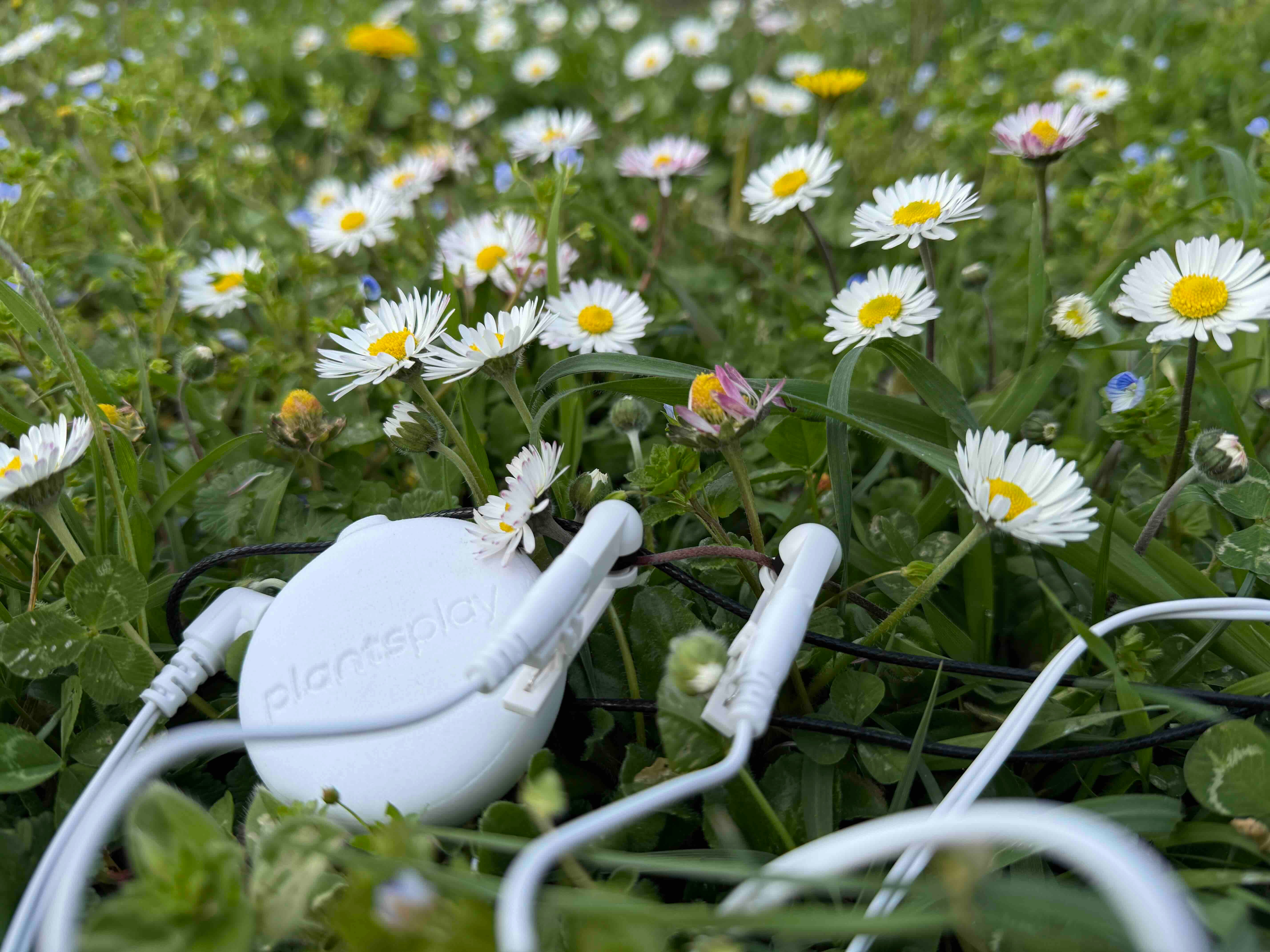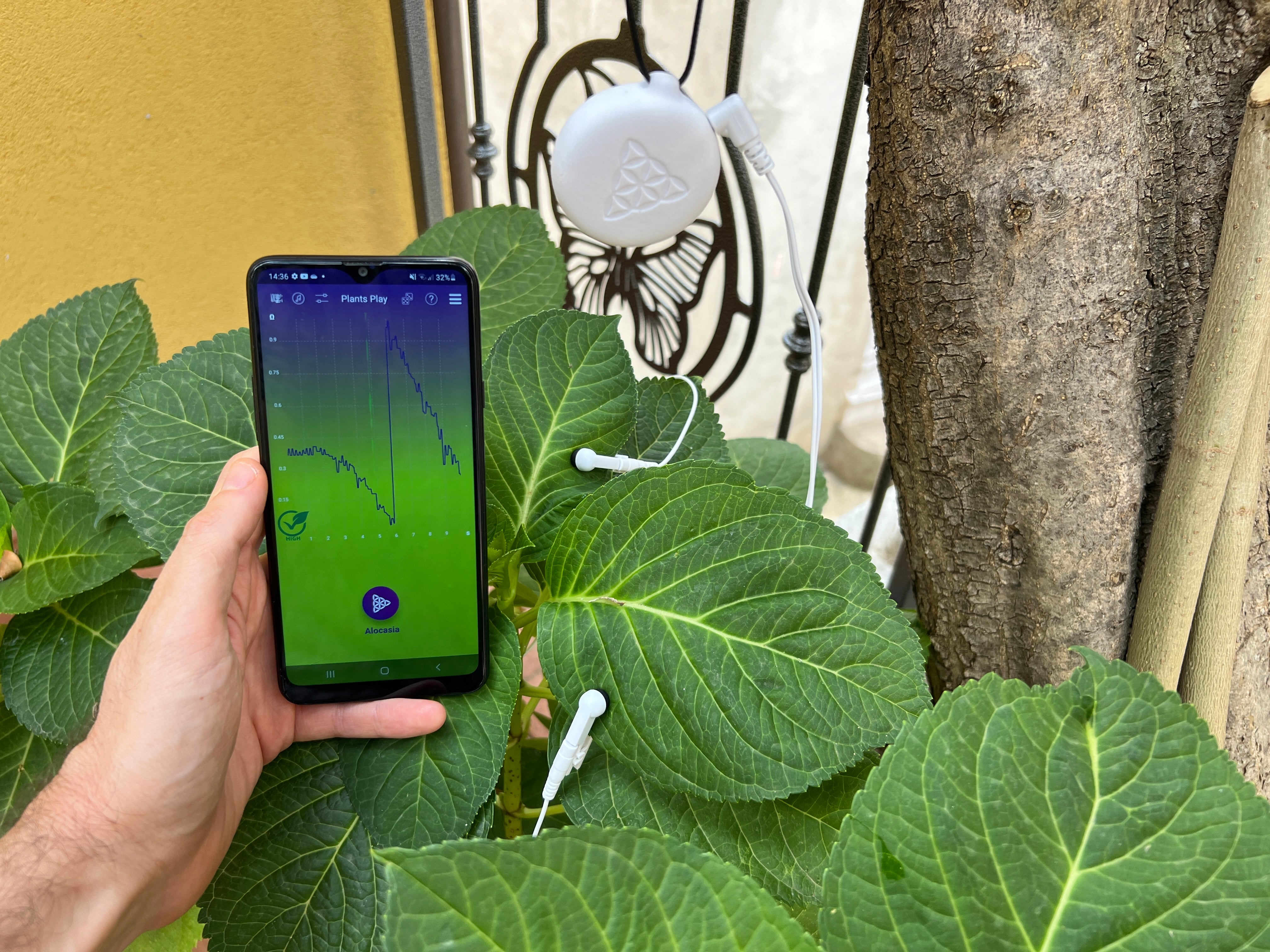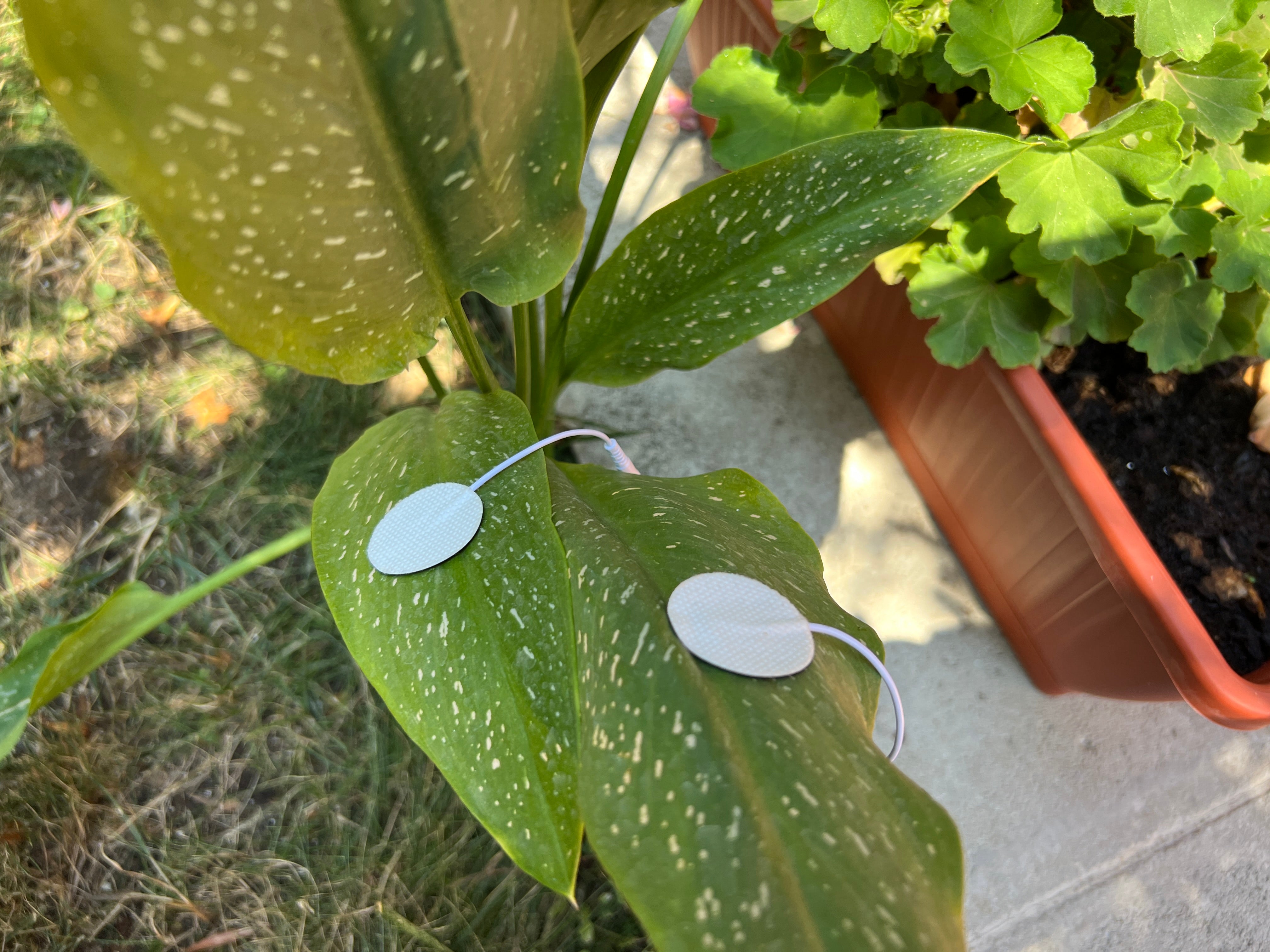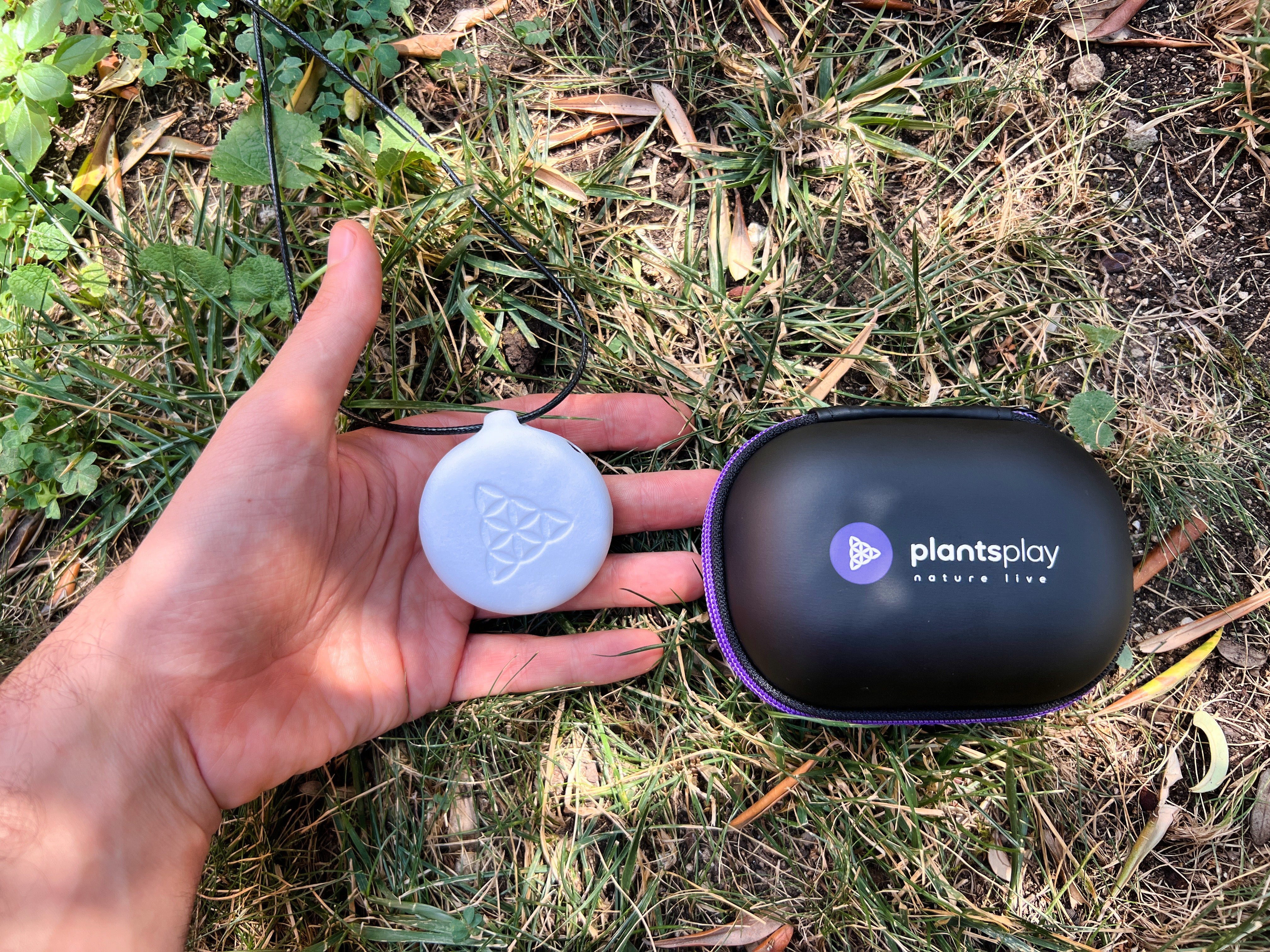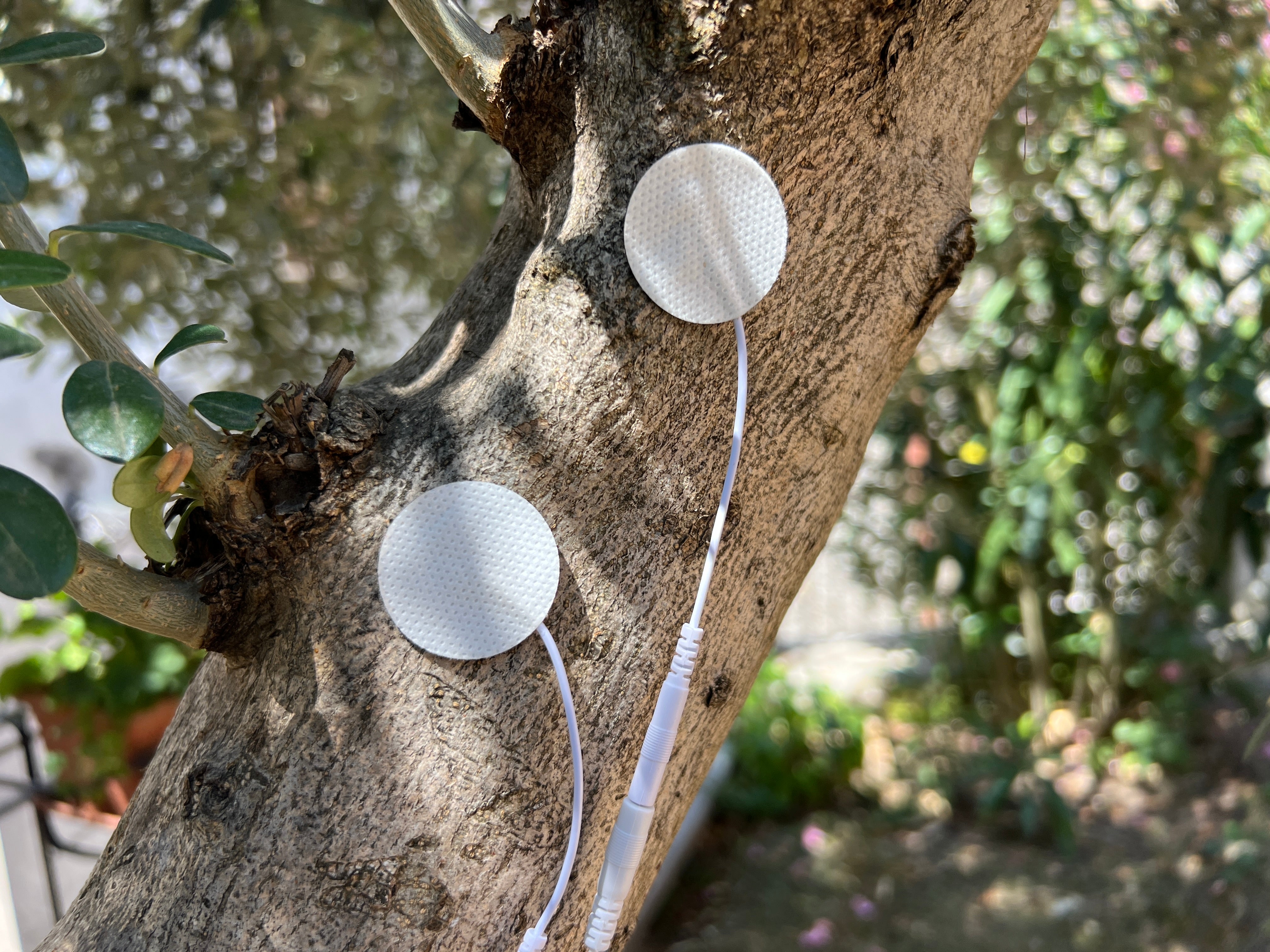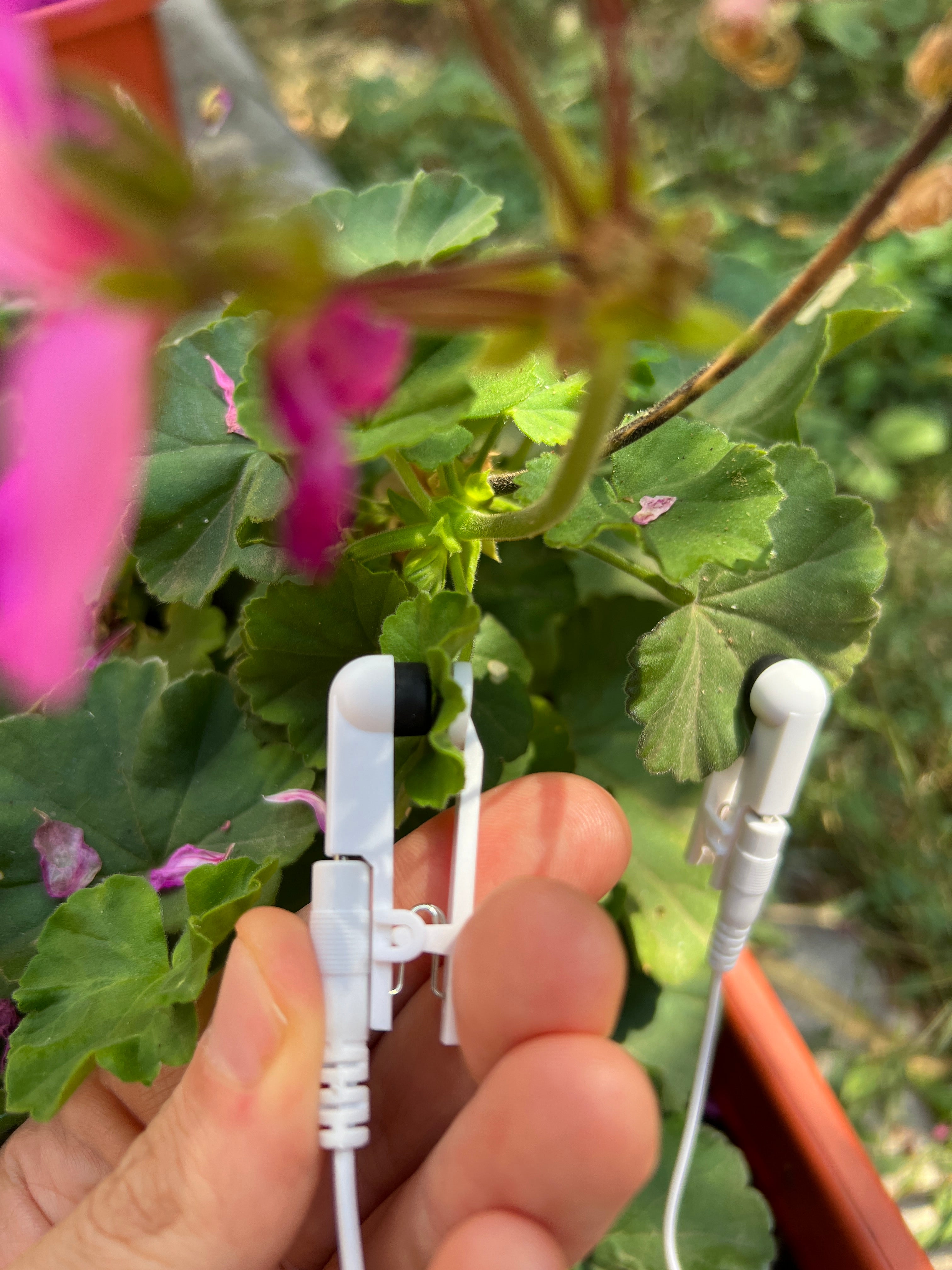
PlantsPlay monitors the subtle electrical fluctuations of a plant through two electrodes attached to its leaves, or on the stem of the tree
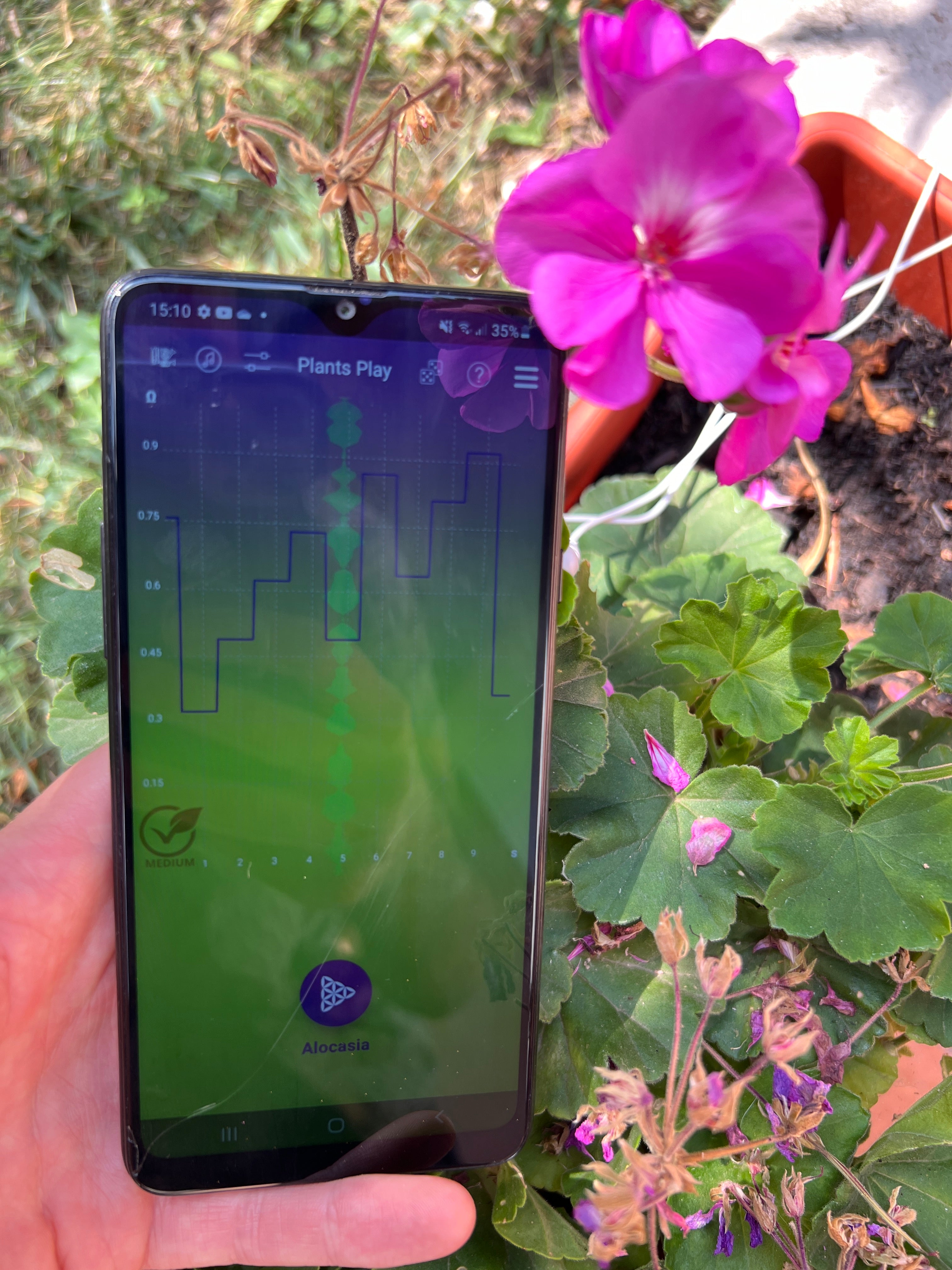
Electrical fluctuations are visible on the app's graph and transformed by the algorithm into musical notes
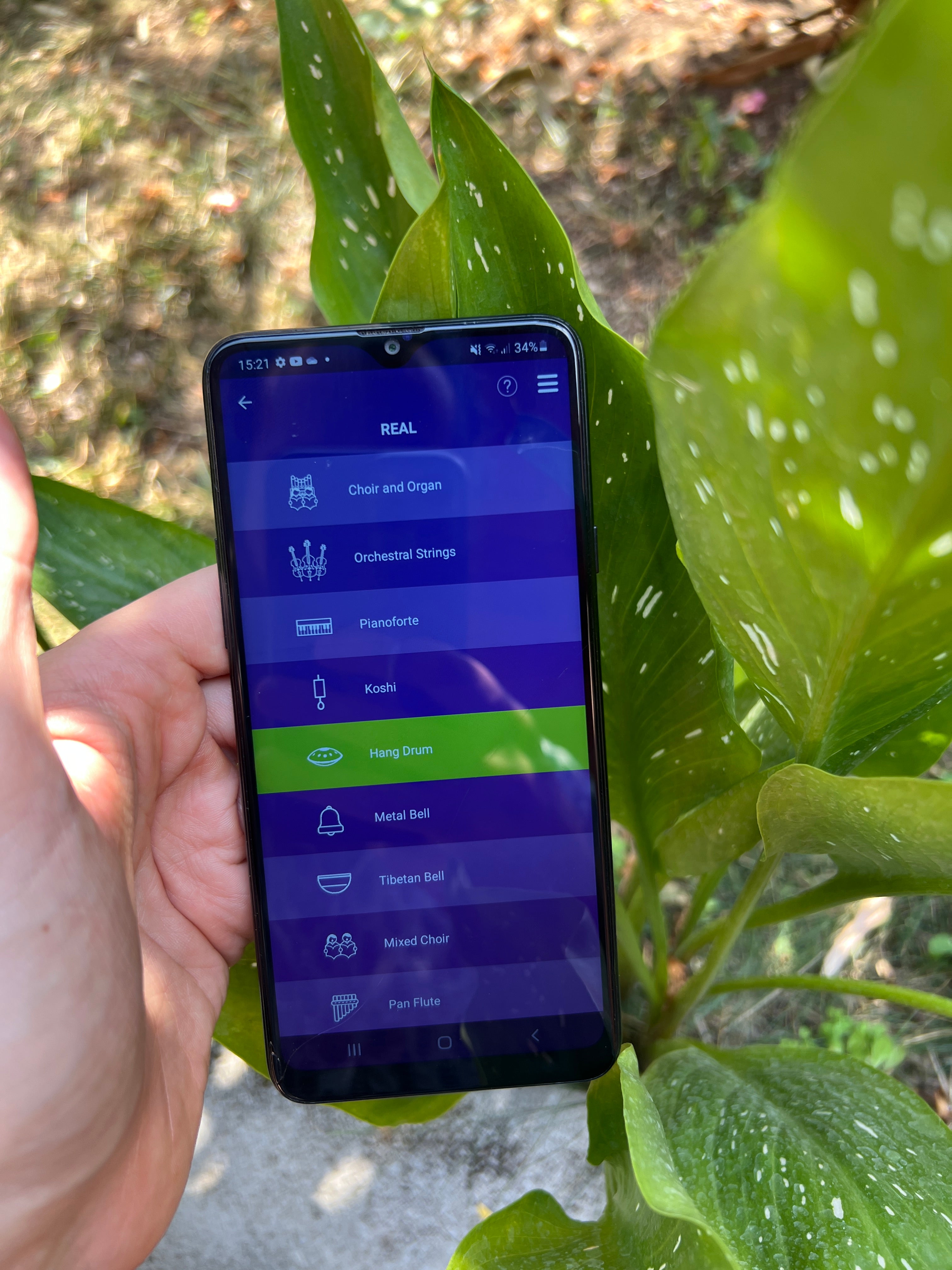
Notes are processed by the audio engine and transformed into sounds, depending on the choices set on the preset (instruments, scale, effects)

Immerse yourself in the secret life of plants and listen to their biorhythmic changes
PlantsPlay monitors the subtle electrical fluctuations of a plant through two electrodes attached to its leaves, or on the stem of the tree
Electrical fluctuations are visible on the app's graph and transformed by the algorithm into musical notes
Notes are processed by the audio engine and transformed into sounds, depending on the choices set on the preset (instruments, scale, effects)
Immerse yourself in the secret life of plants and listen to their biorhythmic changes





Recent scientific studies reveal that plants possess more than 15 senses to interpret their environment. Much of a plant's behaviour is driven by electrochemical reactions, enabling it to continuously react to environmental changes, which in turn influence the music they generate.
Consequently, the plant's music can vary depending on factors such as temperature, light, hydration and relationships with other plants, insects, fungi and animals around it. This variability is also the reason why listening to a plant's music over a prolonged period is always a unique experience as it changes according to the situation the plant is experiencing.
About UsThe transformation of scientific data into sound, or sonification, began in the 1950s for scientific and medical research. NASA and US and Russian government research centres were the first to use this technology.
PlantsPlay uses a circuit similar to that of polygraph machines, known as lie detectors when used on humans (GSR - galvanic skin response), and has enhanced and miniaturised this technology to detect subtle electrical variations in plants and convert them into music.
